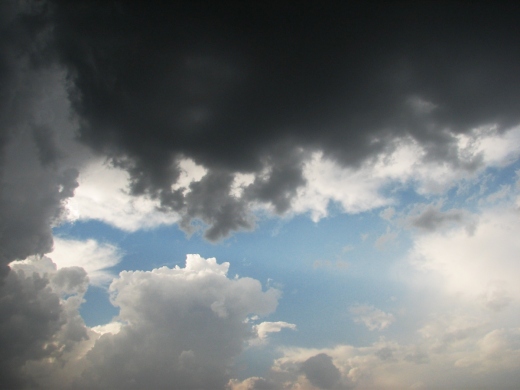Every year towards the end of May, the city of Mumbai begins to change. People start to prepare for the coming of the Monsoon, which is itself derived from the word “mausam” in Arabic which roughly translates as a season. Perhaps in no other place than Mumbai, the might of monsoon is felt by such a large and varied section of people. All the residents, in all the areas of Mumbai, irrespective of their class do prepare for the annual coming of the monsoon. In Mumbai, everywhere you would see temporary structures being erected, plastic sheets of many colours and the most prominent blue tarpaulins being used to cover myriad of houses. It seems that the city itself is getting ready to greet the incoming monsoon. The various preparations done by people of all classes reminds one of festive preparation that families do. Some buy waterproofing for their bodies, some for their homes and shops and some for their vehicles. Some, who are very rich, even buy waterproofing for their pets. Government bodies like the BMC clean up the gutters and nallahs, which were freshwater rivers once, hard to believe when you look at their present states. You can see piles of cleaned up garbage and debris stacked neatly alongside the gutters manholes and nallahs. They say it helps in preventing floods. So, every year, like a seasonal change, you will see people cleaning them, and stacking the filth accumulated in these water bodies, both above the ground and underground in neat stacks.
Business establishments erect skeletons of bamboos and timber around the areas which are not covered. This happens in the case of hotels which have open-air seating areas. Then on these skeletons, they apply sheaths of water-proofing materials. At the end of it, the area is ready for use even in the heaviest rains. Shops which would sell, clothes and other stuff in other seasons, have umbrellas in their display. Even the street and traffic signal vendors start selling them. The umbrellas come in a variety of sizes, colours and designs. Males mostly carry black ones, while the females carry ones with a variety of colours. The umbrella is the protection of the commons against the rain. In the crowded local trains and buses, it is not seen kindly if you wear a raincoat and enter and transfer your wetness to others in the process. Umbrellas, on the other hand, can be folded and kept inside your bag. These are the kind of umbrellas, which are compact are the ones which are most common. The price range generally indicates the number of seasons that an umbrella will last. Also, the cobblers, who double up as umbrella repairers can be seen fixing broken ribs, handles and mechanisms of old umbrellas. Then there are the large ones, which you need to carry in hand, for they are larger than any bags you would usually carry. I myself carry one of the largest sizes available. Because when it really pours, the compact ones, though easy to pack and carry, aren’t going to protect you from getting wet in the Mumbai monsoon.
Then there is the rain footwear. The idea is that in the rains leather (even faux leather) will get damaged. Hence one should wear something made of rubber or plastic which is not affected by the rains. All the branded footwear companies have a stock of rainwear, which people buy as a preparation for the rain. But this is not for the real elite, they will wear their suedes even in the rains. From the by-lanes of Kurla, there emerge cheap replicas of the designer rainwear which are sold at less than 10th of the prices of the originals. They are sold outside the stations, on the streets, and in the shops. Each year, the designs, patterns and colours change depending on what is in vogue in the market.
People also buy protection for their mobile phones and wallets. Just before the rains pavement sellers, who sell a plethora of mobile trinkets and accessories, also start with selling waterproofing for the mobiles. Same is the case with the bags that working people and school children carry. Those not well off use covers of plastic to cover the valuables inside their bags. Good quality plastics are always in demand for such things. But now with the ban, we don’t know what will happen. Others purchase rain covers for their bags. Even with all these precautions mobiles and stuff inside the bags do get wet. And they get damaged.
They say when you are already anticipating something, the shock value isn’t that much as you would expect. But in the case of Mumbai rains, it is not so. Amongst the places I have lived in, the longest has been in Mumbai. Even then, I consider myself alien to this city, an outsider. I have seen and explored parts of it, yet I do not consider myself as a Mumbaikar. There are two primary reasons for this. The first is that even though after staying for more than a decade, I don’t use public transport for my daily commute. Neither the train nor the bus I use regularly. The two major forms of transport in Mumbai. So far, I have not stayed very far away from my place of work. Hence I do not have to suffer [safar?] daily travel. The other reason is that I have not yet made myself at home with the rains. It is not that I do not enjoy the rains, I do, but only for the first few weeks. Then it becomes torture. A melancholy if you will. The sunless skies for weeks on end are depressing enough, and then you have to prepare for the wetness. No matter how hard you try, the rains will get you. There hasn’t been a season where I haven’t got completely drenched. I have given up.
In case, I am caught unawares, without umbrella or any other protection. I just let the rain do its thing. I don’t fight it. But the city itself is fully prepared for it. Unless it is a literal flood, the city continues its routine as if, nothing has happened. All the supply lines will be working as they are supposed to. Waterlogging will produce delays in traffic and trains, but that is about it. If half the amount of rain that lashes Mumbai every season pours into any other metro it will come to a standstill. But Mumbai has made sure that the services operate despite this amount of rain. It is because of anticipation and will of the people to work.
The area of Mumbai is about , and the average rainfall in Mumbai is about
. This essentially means that we have rainfall equivalent to about
water present on the entire surface of about
. So the total volume of water that Mumbai receives each year is
As a first approximation we can consider the rain drops to be of uniform size, and the diameter of the drop is about . So the volume of the drop is about
Hence in each year the number of raindrops on Mumbai would be
As a better approximation we can take into account the fact that not all raindrops have the same size. We can then make a distribution of the raindrops according to their size. We can have a distribution of the raindrops according to their size as follows:
| Type of Shower |
Diameter of drops (mm) |
Percentage | Volume |
|---|---|---|---|
| Drizzle | 0.5 | 15 | |
| Normal | 1 | 70 | |
| Thunder | 3 | 15 |
So the total volume of our rail gets distributed according to the above table. Now we calculate the number of drops for each type of shower:
Hence the number of drops in drizzle are:
Similarly for normal shower we get
Hence the number of drops in normal shower are:
Similarly for thunder shower we get
Hence the number of drops in normal shower are:
So if we add all these up we get the total number of drops:
This is not very different from our first rough estimate.

































